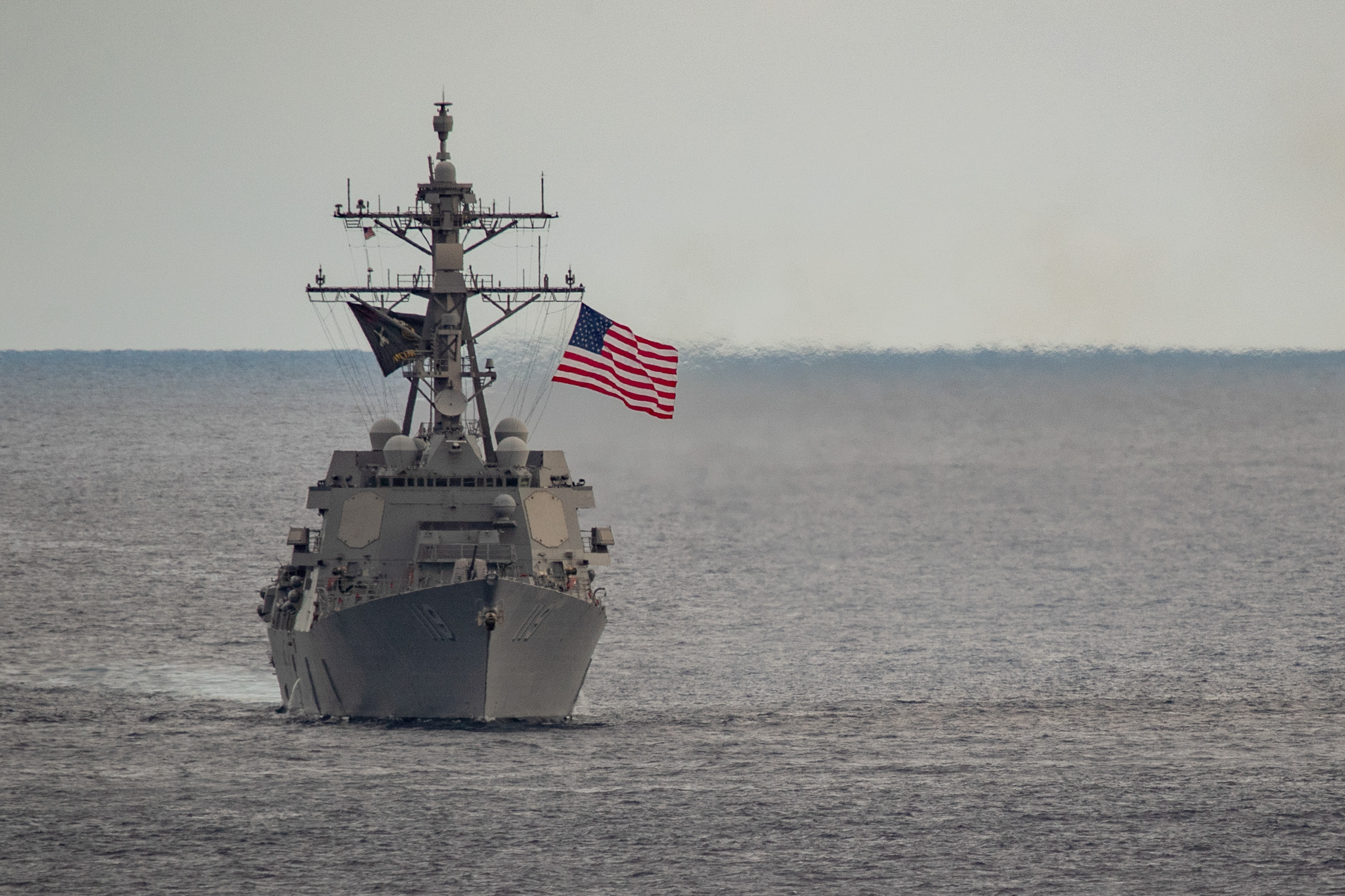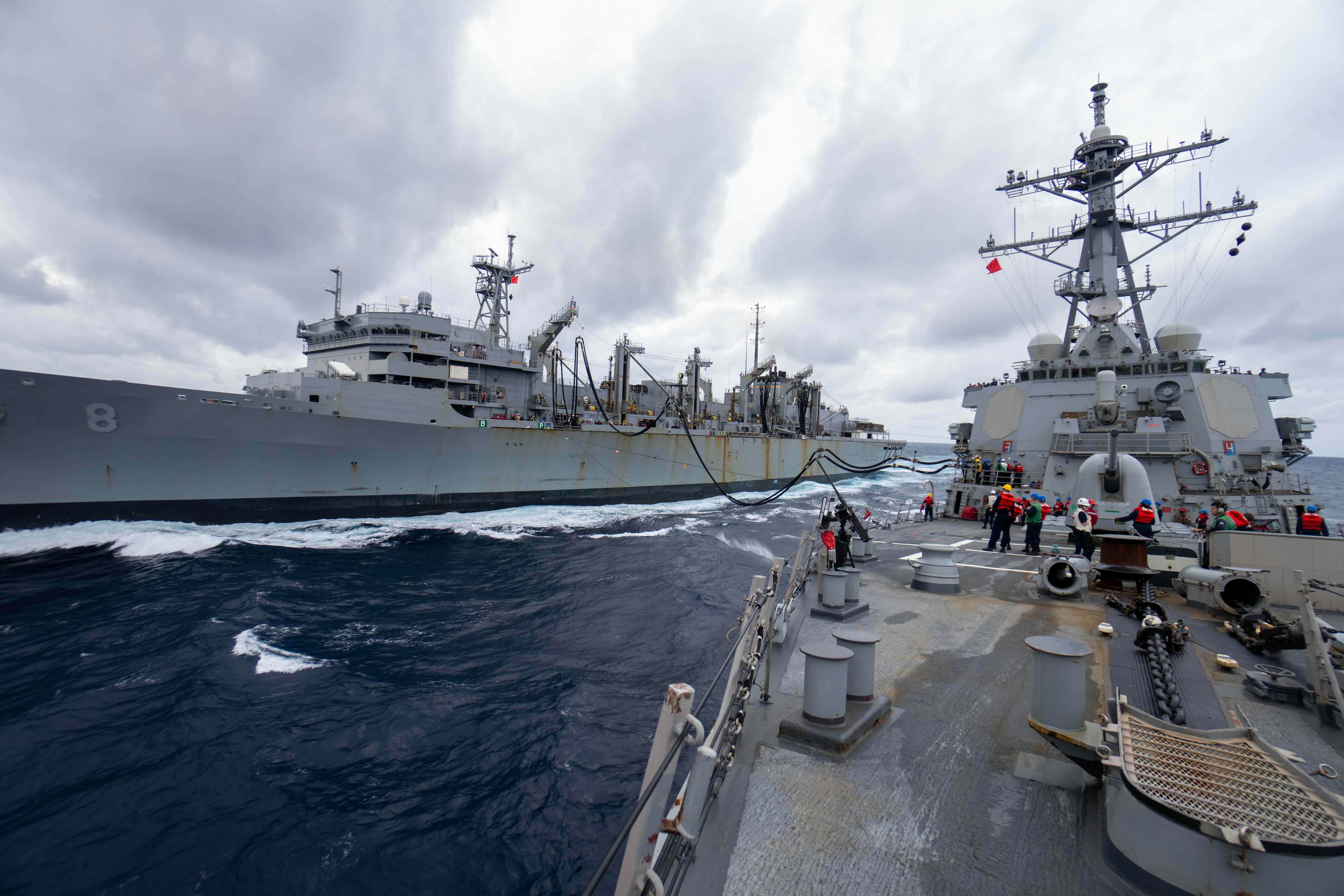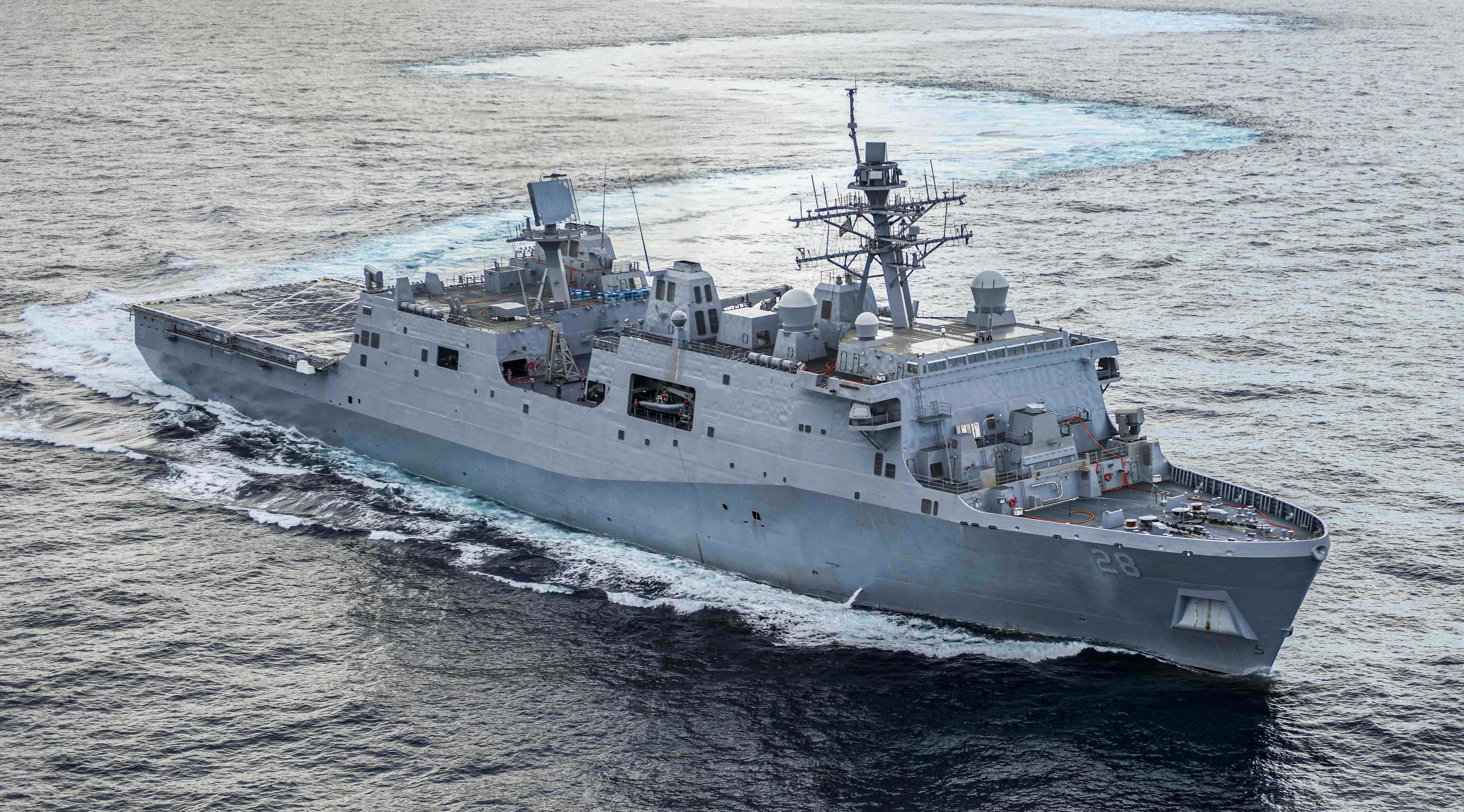
ARLINGTON, Va. – Fleet Forces Command is working on a new plan to take a peacetime naval force and develop a construct for a U.S. Navy at war.
Speaking at the Surface Navy Association’s annual symposium on Tuesday, Adm. Darryl Caudle outlined the start of a new framework for high-end conflict.
“The sea has once again emerged as a primary focal point for peer competition,” Caudle said in his speech.
Fleet Forces have been tasked with crafting the Global Maritime Response Plan for the Navy to fight in high-end conflict, he told reporters on Tuesday before his speech at SNA.
For more than 20 years, the Navy has been largely locked into variations of the current Optimized Fleet Response Plan – the 36-month-long cycle the service uses to train-up its large formations for deployment and maintenance after they come home.
But, according to Caudle, OFRP is a peacetime plan not suited for world-wide conflict and a different structure is needed. The new Global Maritime Response Plan is a break-glass-in-case-of-war plan to surge available forces.
“OFRP was not built to generate combat ready ships and air wings to meet the demand signal against peer adversaries. During peacetime force generation, the OFRP provides a steady supply of ready naval forces for a wide range of global presence operations. But it is not optimized to shift into high gear,” he said in his speech.
“The Global Maritime Response Plan is being designed to give the CNO a way to shift the Navy from peacetime to wartime.”
Apart from OFRP, the new war plan “basically looks at our Navy and says What can we do if I need to transition to a warfighting footing more quickly? What is it I can deliver the forward commanders and in [a] more real time sense,” Caudle told reporters on Tuesday.
“What do I need to do in the continental United States to support that effort?”
The new war plan is rooted in the thought that out of the about 300 ships in the fleet any given time there are 100 ships that are underway and about 100 ships that are so deep into maintenance they wouldn’t be available to fight, Caudle said. The plan would be how to get the remaining 100 ships trained and ready. The new response plan would create a wartime set of rules for deployments, manning and maintenance to flow more forces in the lead up to a conflict.
“We have to think about what we won’t currently bring to the fight on day one and what we need to change today in order to have the most lethal, combat-credible forces… with the Navy we actually have,” Caudle said.
Part of that effort is tied to Naval Surface Force effort to create a force of 75 ready surface ships by using data analytics to get a better sense of the material condition of individual ships to see what can be surged within 10 days and what can be surged in 30 days.
“Let’s say you’re a fully mission-capable ship and you have one thing that breaks, you’re now not fully mission-capable,” Caudle said.
“There’s a more sophisticated way to look at that. If I can repair that [part] within 10 days, then I can still count that ship in my basically immediate response force bucket. If I can repair that ship in 30 days, I can count that in my contingency response force bucket.”
Understanding the capabilities of a ship allows fleet commanders a better sense of what they can provide to combatant commanders. The first revision is due by the end of the year, Caudle told reporters.
While the plan is developing, the Navy is learning practical lessons that will inform the larger plan based on the ongoing naval deployments in the Eastern Mediterranean and the Red Sea in response to the Oct. 7 Hamas attacks in southern Israel and the Iran-backed Houthi attacks on merchant shipping in the Red Sea.

In particular, the Gerald R. Ford Carrier Strike Group worked up and deployed with three guided-missile destroyers that departed the strike group long before the carrier hit its deployment limit. USS Ramage (DDG-61), USS McFaul (DDG-74) and USS Thomas Hudner (DDG-116) were relieved from USS The Sullivans (DDG-68) and USS Delbert D. Black (DDG-119) in support of carrier USS Gerald R. Ford (CVN-78). Ford was extended three times on orders from Secretary of Defense Lloyd Austin.
“Our nuclear carriers… That thing can sit in theater a long time. The small boys, they can’t do that,” Caudle said.
“Eventually, when you’re on station for a long time on a ship, you got to take a knee. As you roll out to take a knee and somebody rolls in, I have to have high confidence that they come in at the right level of training, certification mastery and the ability to plug and play into that strike group.”
Caudle has advocated for “plug and play” destroyers to increase the flexibility of the surface force and the deployment of The Sullivans and Delbert D. Black was a proof of the concept.
“It was handed to me as a gift,“ he said.
“I think what we’re going to see in the post-deployment analysis is they plugged in seamlessly, and the fact we’re able to do that is a testament to how we generate those forces.”





